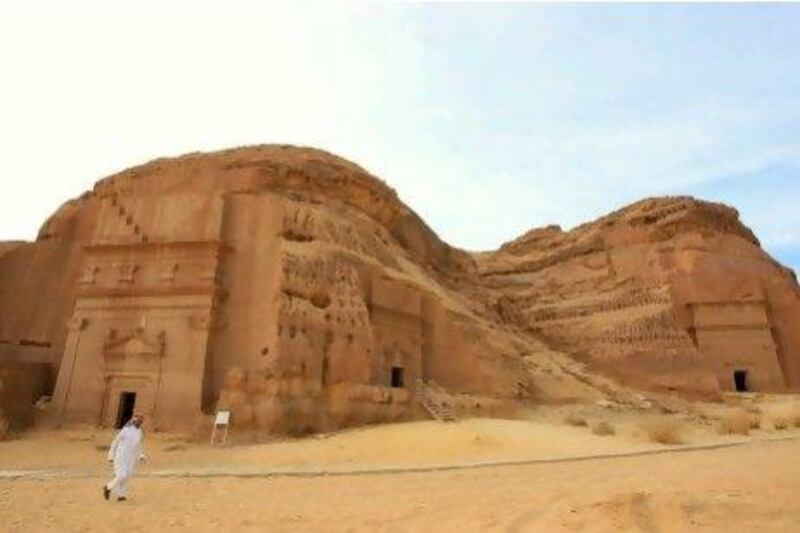GYEONGJU, SOUTH KOREA // Saudi Arabia is to launch a major programme to plough investment into its heritage sites this year.
But only a limited number of foreigners are likely to enjoy the attractions. The kingdom's aim is to encourage its local residents to visit the sites rather than attract inbound tourism.
Saudi Arabia boasts historical and archaeological gems such as the ruins of Al Hijr, which is the largest settlement of the Nabatean kingdom after Petra.
"This year we'll hopefully be announcing a programme to re-invest completely in the heritage sites of Saudi Arabia," said Prince Sultan bin Salman bin Abdulaziz Al Saud, the president of the Saudi Commission for Tourism and Antiquities, speaking on the sidelines of a tourism conference in South Korea.
"We now [have] more than 20 international teams excavating in Saudi Arabia. We're building about eight new museums. It's a lot of investment."
Saudi Arabia, which issues a very limited number of tourist visas each year to foreigners, is working on the development of its leisure infrastructure, largely to cater to local residents.
At least three new airports are expected to open this year, while new roads to the country's heritage sites are being developed, Prince Sultan said. Domestic tourism dropped by more than 28 per cent last year to 23.9 million trips, from 33.5 million the previous year, as Saudi nationals increasingly travelled abroad for holidays, according to Saudi Arabia's Tourism Information and Research Centre. There has been a surge in the number of Saudi tourists visiting the UAE this year.
"Our focus in domestic tourism is because we're one of the biggest exporters of tourists going out of Saudi Arabia, mainly because we're not providing the services and the destinations that are needed for the sophisticated Saudi tourist now," said Prince Sultan.
"Saudis have been travelling. They have been to the Emirates and other countries and have learned a lot and they want the same services and the same treatment.
"We are focusing on this major market that we have in Saudi Arabia of 6 million people travelling abroad. That's a market with a lot of money."
The country is also building modern, mixed-use developments on the Red Sea. "We are not focusing at all on international tourism," said Prince Sultan.
"It would be a big mistake for us to open up that market when we are not even ready in Saudi Arabia infrastructure-wise, services-wise, tourism systems-wise."
Amr Abdel-Ghaffar, the regional director for the Middle East at the UN World Tourism Organisation, said there was a surge in religious travellers to the kingdom last year, and said that was another market the kingdom would target for tourism revenues. "The results of religious tourism are very positive," said Mr Abdel-Ghaffar. "That's largely due to an increase in Umrah [Mecca pilgrimage] visitors to Saudi Arabia.
They've been very active in promoting a special programme called Umrah-plus in Saudi Arabia."
This involves encouraging pilgrims to stay on in the country for tourism after their visit to Mecca.
Each year, Saudi Arabia attracts about 7.8 million pilgrims to the city and Medina, a number that could increase to 13.75 million by 2019, according to Jones Lang LaSalle. "We'll be targeting certain groups who come for Umrah to enjoy Saudi Arabia," said Prince Sultan. "We also have a major expat community.
"We'll be targeting the top level of that. There are already tourists living in Saudi Arabia who would really like to enjoy the country in a much more organised way.
"We're also not totally closed to people coming from abroad with special permission - small groups - but we're not really keen on inbound tourism more than we can handle."





